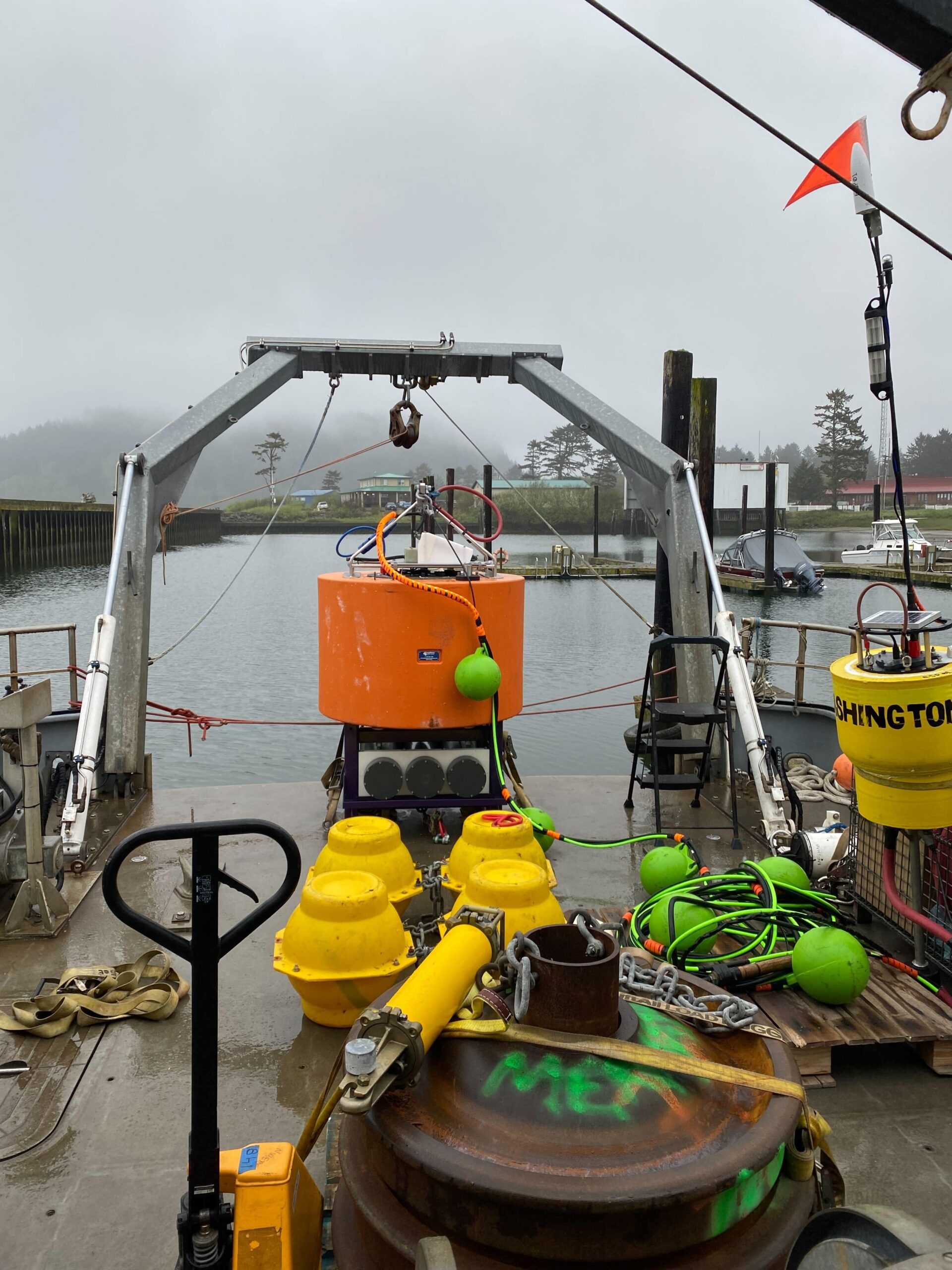
This summer, and as part of an ongoing project, a team of NCCOS funded scientists has been monitoring domoic acid in near real-time using an autonomous instrument called the Environmental Sample Processor (ESP) and an NCCOS-designed domoic acid (DA) sensor. These “lab in a can” instruments—as they are referred to by the scientists due to their self-contained operation within a cylindrical casing—concentrate cells from seawater, apply molecular probes to identify harmful algae and their toxins, and transmit the results to shore so that they can be relayed to end-users in near real-time.
Domoic acid is a neurotoxin produced by the marine diatom, Pseudo-nitzschia. When present in abundance (a harmful algal bloom or HAB), DA poses significant threats to the health of humans and wildlife, and is costly to coastal communities throughout the Pacific Northwest. Therefore, it is critical to accurately track this toxin and relay the information to resource managers and decision-makers.
In May, at the beginning of the 2023 bloom season, the team deployed ESPfriday (nicknamed for its initial deployment outside of Friday Harbor Laboratories in 2012) on a mooring 15 miles offshore of La Push, Washington to collect near real-time domoic acid measurements. Due to the duration of battery life and supplies within each sensor, ESPfriday was replaced midway through the season by ESPeddie (named for its initial launch south of the Juan de Fuca eddy in 2016) to ensure uninterrupted acquisition of these valuable toxin data through September. In addition, the team was able to remotely trigger the ESPs to take more samples as needed in response to changing domoic acid levels.
This year the team made significant upgrades to the ESP mooring system and used a new short-puck configuration. By incorporating lower profile reaction chambers (or short pucks) within the ESP, the system can contain more pucks, increasing the capacity to process samples by 50 percent. This allows the team to more closely and accurately track the development of a toxic Pseudo-nitzschia bloom.
This mission provided an unprecedented five months of continuous offshore surveillance of DA, which can contaminate shellfish in the region causing economically devastating harvest closures. The ESP’s autonomous toxin measurements were processed and disseminated in near real-time to stakeholders via the Northwest Association of Networked Ocean Observing Systems (NANOOS), “Real-Time HABs” website and data were also included in the Pacific Northwest HAB Bulletin, coinciding with tribal and recreational razor clam harvest periods. The NANOOS Data Visualization System and the Real-time HABs website provide access to these ESP DA measurements and contextual observations that help to assess risk, such as water trajectories. Visit the ESP Now page to view their latest measurements.
These efforts are providing actionable information on HAB toxicity to inform shellfish management and the Pacific Northwest HAB Bulletin, a regional HAB forecast. Of the almost 100 DA measurements made during these two sequential deployments, toxin levels exceeding 90 ng/L were reported several times and served to alert state managers to possible offshore HAB development and the potential for a shellfish contamination event..
This project is co-led by the University of Washington and NOAA’s Northwest Fisheries Science Center, along with partners at the Monterey Bay Aquarium Research Institute, Olympic Coast National Marine Sanctuary, National Centers for Coastal Ocean Science, Quileute Tribe, and McLane Research Laboratories. It is funded by the NCCOS Monitoring and Event Response for Harmful Algal Blooms (MERHAB) Research Program. Learn more about this five year project.
|
|
|


